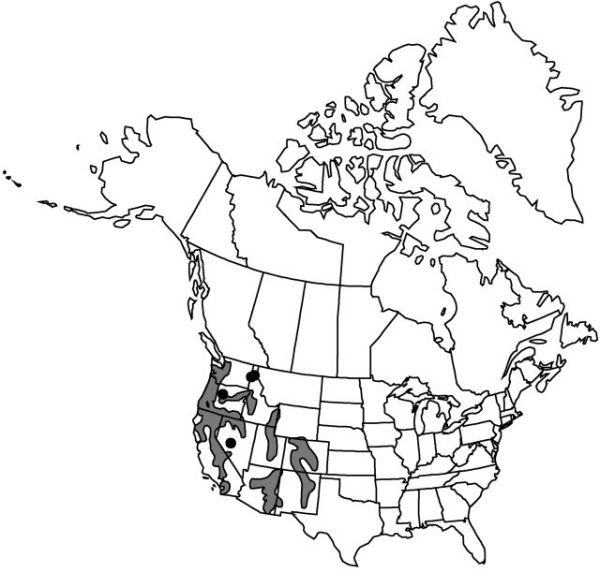Veratrum californicum
J. Acad. Nat. Sci. Philadelphia, ser. 2, 3: 103. 1855.
Stems 1–2.5 m, ± glabrous proximally, tomentose distally. Leaves ovate, distalmost lanceolate to lance-linear, 20–40 × 15–25 cm, reduced distally, tomentose-ciliate, curly-hairy abaxially, glabrous or veins sparsely short-hairy adaxially. Inflorescences dense-paniculate, with spreading to stiffly erect branches to near tip or distal 1/3–1/2 unbranched, 30–70 cm, tomentose; bracts ovate-elliptic to lanceolate, shorter than to obviously longer than flowers. Tepals creamy white, greenish basally, lanceolate to elliptic or oblong-ovate, not or very slightly clawed, 8–17 mm, margins entire to denticulate, glabrous to abaxially tomentose; gland 1, basal, green, V-shaped; ovary glabrous or with few hairs; pedicel 1–6 mm. Capsules narrowly ovoid, 2–3 cm, glabrous. Seeds flat, winged, 10–12 mm.
Distribution

w North America.
Discussion
Varieties 2 (2 in the flora).
Different geographic elements of Veratrum californicum have been described as separate species or varieties. The variation seems to be clinal, with most variants not consistent in their appearance or distribution. We have recognized two varieties that appear to be fairly consistent in their distributions and characteristics.
Western Native Americans (Blackfeet, Paiute, Shoshone, Thompson, and Washoe) used this species as an antirheumatic, poison, contraceptive, and emetic, as well as a skin, respiratory, blood, cold, snake bite, throat, and toothache aid (D. E. Moerman 1986).
Selected References
None.
Key
| 1 | Panicle branched more than 2/3 length of tip; bracts in unbranched portion ovate-elliptic, seldom exceeding flowers. | Veratrum californicum var. californicum |
| 1 | Panicle unbranched in distal 1/3–1/2; bracts in proximal unbranched portion lanceolate, frequently 2–3 times longer than flowers. | Veratrum californicum var. caudatum |